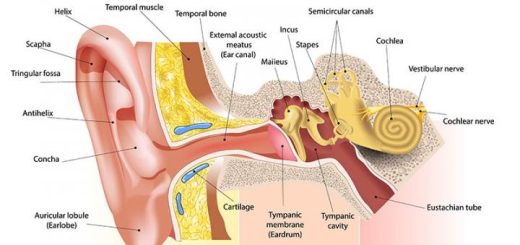Arteries of leg and foot, Veins and Lymphatics of the lower limb
The anterior tibial artery begins at the lower border of the popliteus as the smallest terminal branch of the popliteal artery. It penetrates the upper part of the interosseous membrane to reach the anterior compartment of the leg. and it passes deep to the superior extensor retinaculum.
Anterior tibial artery
Through its course, it lies medial to the anterior tibial nerve. It ends in front of the ankle joint midway between the two malleoli, where it continues to the dorsum of the foot as the dorsalis pedis artery.
Branches of anterior tibial artery
- Posterior tibial recurrent artery: ascends to share in the anastomosis around the knee joint.
- Anterior tibial recurrent artery: ascends to share in the anastomosis around the knee joint.
- Muscular branches.
- Anterior medial malleolar artery: shares in the anastomosis around the ankle.
- Anterior lateral malleolar artery: shares in the anastomosis around the ankle.
- Nutrient arteries: To both tibia and fibula.
Dorsales pedis artery
Dorsales pedis artery is the continuation of the anterior tibial artery in front of the ankle joint. It runs closely medial to the anterior tibial nerve. It passes deep to the inferior extensor retinaculum. At the proximal part of the first interosseous space, it passes to the sole of the foot by piercing the first dorsal interosseous muscle. In the sole of the foot, it ends by anastomosis with the end of the plantar arch.
Branches:
- Lateral tarsal artery.
- Medial tarsal arteries: Two or three branches.
- Arcuate artery: Passes laterally on the bases of the metatarsals deep to the tendons of the extensor digitorum longus and brevis. It gives the second, third and fourth metatarsal arteries.
- First dorsal metatarsal artery.
- First plantar metatarsal artery: In the sole of the foot.
Posterior tibial artery:
It is the largest terminal branch of the popliteal artery.
Course:
- It descends deep to the tendinous arch between the tibia and fibula, deep to soleus muscle.
- The tibial nerve lies medial to the artery in the upper third of the leg, and then it crosses superficial to the artery to continue on its lateral side.
- The artery ends deep to the flexor retinaculum midway between the medial malleolus and medial tubercle of calcaneus.
Branches:
- Peroneal (fibular) artery: it descends behind the fibula; it gives off muscular branches and a nutrient artery to the fibula and ends by taking part in the anastomosis around the ankle joint. A perforating branch pierces the interosseous membrane to reach the lower part of the front of the leg.
- The circumflex fibular artery arises from the origin of the anterior or posterior tibial artery at the knee and passes laterally over the neck of the fibula to the anastomoses around the knee.
- Muscular branches are distributed to muscles in the posterior compartment of the leg.
- Nutrient artery to the tibia.
- Anastomotic branches, which joint other arteries around the ankle joint.
- Medial and lateral plantar arteries.
Arteries of the sole of the foot:
Medial plantar artery
The medial plantar artery is the smaller of the terminal branches of the posterior tibial artery. It arises beneath the flexor retinaculum. It ends by supplying the medial side of the big toe. Branches: Muscular, cutaneous, and articular branches.
Lateral plantar artery
The lateral plantar artery is the larger of the terminal branches of the posterior tibial artery. It arises beneath the flexor retinaculum. On reaching the base of the fifth metatarsal bone, the artery curves medially to form the deep plantar arch, and at the proximal end of the first intermetatarsal space joins the dorsalis pedis artery. Branches: muscular, cutaneous, and articular branches.
Major branches of the deep plantar arch include:
- A digital branch to the lateral side of the little toe;
- Four plantar metatarsal arteries, which supply digital branches to adjacent sides of toes I to V and the medial side of the great toe;
- Three perforating arteries, which pass between the bases of metatarsals II to Vto anastomose with vessels on the dorsal aspect of the foot.
The Trochanteric anastomosis
The trochanteric anastomosis provides the main blood supply to the head of the femur. The following arteries take part in the anastomosis: the superior gluteal artery, the inferior gluteal artery, the medial femoral circumflex artery, and the lateral femoral circumflex artery.
The Cruciate anastomosis
The cruciate anastomosis is situated at the level of the lesser trochanter of the femur and, together with the trochanteric anastomosis, provides a connection between the internal iliac and the femoral arteries. The following arteries take part in the anastomosis: the inferior gluteal artery, the medial femoral circumflex artery, the lateral femoral circumflex artery, and the first perforating artery, a branch of the profunda artery.
Anastomosis around the knee
Formed of 10 arteries:
- 1 – Descending genicular artery (branch of the femoral artery).
- 2,3 – Anterior and posterior tibial recurrent arteries (of the anterior tibial artery).
- 4 – Circumflex fibular artery (of posterior tibial).
- 5 – Descending branch of the lateral circumflex femoral artery.
- 6 to 10 – Superior and inferior medial genicular, middle genicular, and superior and inferior lateral genicular arteries (branches of the popliteal artery).
Veins of the lower limb
Superficial veins of the front of the thigh
The great saphenous vein:
- It passes upwards in front of the medial malleolus to the medial side of the leg.
- It curves forward around the medial side of the thigh.
- It passes through the lower part of the saphenous opening.
- It ends in the femoral vein about one and half inches below and lateral to the pubic tubercle.
- It has many valves. It is connected with the deep veins by a number of perforating veins.
Femoral vein
It is the continuation of the popliteal vein at the adductor opening.
Course: It continues in the adductor canal, then in the femoral triangle. It terminates as the external iliac vein after passing behind the inguinal ligament medial to the femoral artery.
Tributaries:
- Muscular veins
- Descending genicular vein
- Profunda femoris vein
- Deep external pudendal vein
- Lateral circumflex femoral vein
- Medial circumflex femoral vein
- Great saphenous vein
Popliteal vein
It begins with the union of the vena comitantes of the anterior and posterior tibial veins at the lower border of the popliteus. In the lower part of the fossa, the vein is medial to the artery. It crosses the superficial to the artery and becomes posterolateral to the artery at the upper part of the fossa. It terminates by passing through the adductor opening and continues as the femoral vein.
Tributaries:
- Muscular veins
- Genicular veins corresponding to the arteries
- Short saphenous vein
Short (small) saphenous vein
It starts at the lateral side of the dorsal venous arch and the lateral margin of the foot. It runs up in the subcutaneous fat posterior to the lateral malleolus (accompanied by the sural nerve) to the middle of the calf where it usually pierces the deep fascia and ascends to the popliteal fossa where it ends in the popliteal vein. It communicates with the great saphenous vein by many channels.
Superficial veins of the back of the thigh: drain into the great saphenous vein. Veins from the lower part of the back of the thigh drain into the small saphenous vein.
Veins of the foot
There are interconnected networks of deep and superficial veins in the foot. The deep veins follow the arteries; superficial veins drain into a dorsal venous arch on the dorsal surface of the foot over the metatarsals.
The great saphenous vein originates from the medial side of the arch and passes anterior to the medial malleolus and onto the medial side of the leg; The small saphenous vein originates from the lateral side of the arch and passes posterior to the lateral malleolus and onto the back of the leg.
Lymphatics of the lower limb
The lymphatics of the lower limb are classified into two main groups:
Superficial lymphatics
The superficial lymphatics accompany mainly the great saphenous vein from the foot, leg, and thigh to drain into the ”superficial inguinal lymph nodes”. Superficial inguinal lymph nodes consist of about 10 nodes. They are subdivided into:
- The vertical (distal) group lie vertically along the terminal part of the great saphenous vein
- The horizontal (proximal) group lies transversely just below the inguinal ligament. They are divided by the vertical group into Lateral group, and Medial group. The superficial inguinal nodes drain mainly into the deep inguinal lymph nodes through efferent lymphatics which pierce the cribriform fascia.
Deep lymphatics
The deep lymphatics ascend along the main blood vessels of the lower limb to terminate into the ”deep inguinal lymph nodes”. Deep inguinal lymph nodes are few in number (three or four groups). They lie deep to the upper part of the fascia lata medial to the femoral vein, one or two lies in the femoral canal (lymph node of Cloquet).
The deep inguinal lymph nodes drain into the ” external iliac lymph nodes” through the lymphatics that accompany the femoral vein deep to the inguinal ligament.
Blood vessels of lower limb, Superior & Inferior gluteal artery, Femoral and Popliteal artery
Deep fascia of the foot, Extensor expansion of toes, Dorsum and Sole of the foot
Leg nerves types, Injuries of nerves of the lower limb and Sciatica causes
Gluteal region structure, muscles, nerves and Posterior compartment of thigh muscles
Joints of lower limb, Hip joint, Knee joint, Tibio-fibular joints structure and movements



